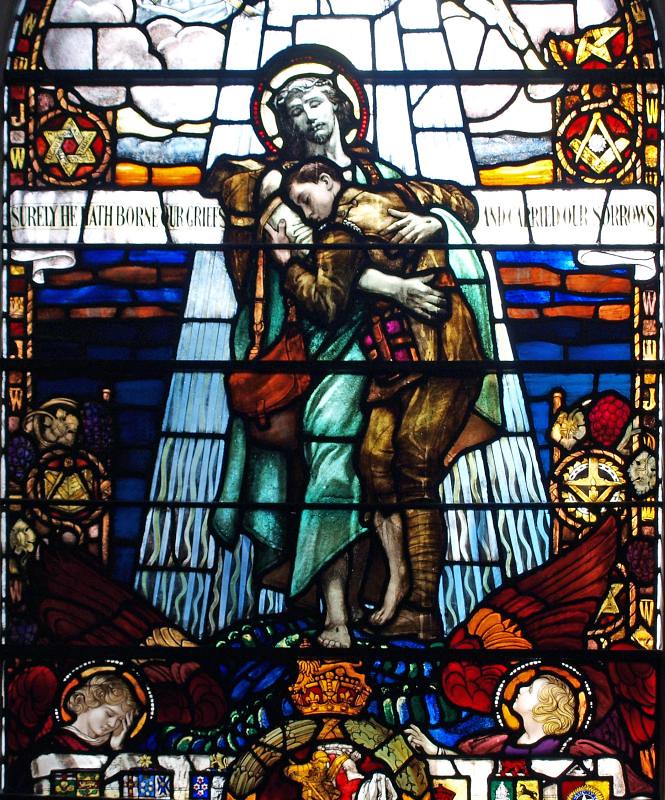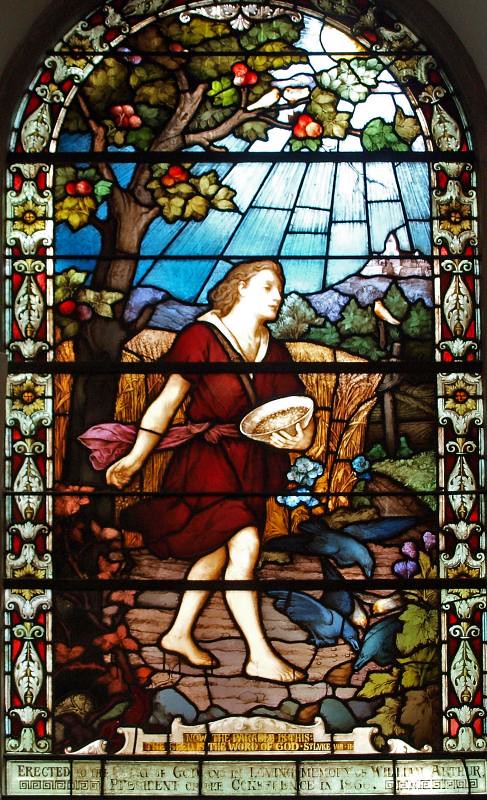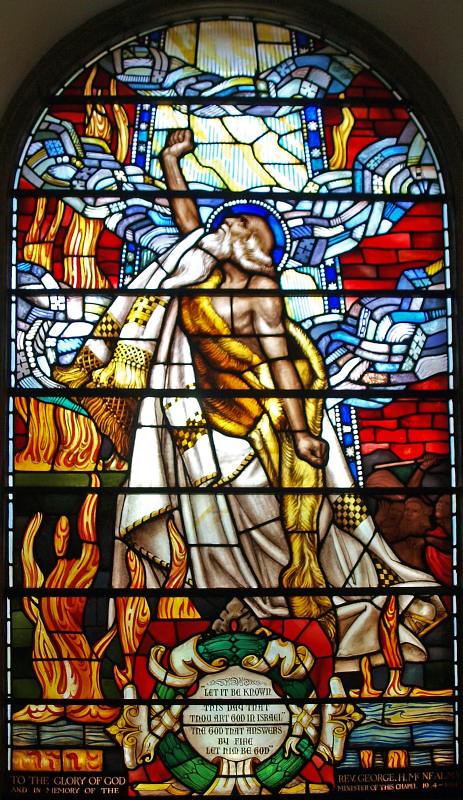The most striking thing in the chapel is John Wesley’s shining mahogany pulpit resting on arches flanked by fluted pillars. The round chancel arch is original, and so are the graceful altar rails with slender balusters. The mahogany panels behind the altar were erected about Waterloo year, forming a background for the dignified chair from Wesley’s first chapel, in Bristol. On the altar table is the little mahogany lectern used by Wesley at the Foundery, the disused Finsbury arsenal where he started his London services.
A window in the gallery shows Wesley preaching to the Red Indians in Georgia, and on the sunny side of the nave is another beautiful window by Frank Salisbury, in memory of the sending of the first Methodist missionaries to Australia. The window represents Spiritual Power, and shows an armoured knight with a flaming torch kneeling before a white-clad angel with outstretched arms. Near by is Mr Salisbury’s magnificent window to all Methodists who fell in the war, with a figure of Christ calling a soldier and bearing his pack on His own shoulders. Angels hold scrolls, and a wreath of oak and laurel encircles a figure of St George.
On the wall of the apse is John Wesley’s stone, starting with his dying words: “The best of all, God is with us,” and going on to say that “He went out into the highways and hedges calling sinners to repentance, and publishing the Gospel of Peace.” Carved on the stone is a shepherd’s crook, a winged trumpet, and light breaking from a cloud. A globe symbolises the worldwide spread of Methodism, and a Bible and prayer book suggest the foundations on which it is based. On the opposite wall is the stone of John’s brother Charles, headed by his famous words, “God buries His workmen, but carries on His work.” Carved volumes of hymns and poems illustrate the inscription, which says that “as a Christian poet he stood unrivalled, and his hymns will convey instruction and consolation as long as the English language shall be understood.”
Below, on a stone to Dr Coke, an early Methodist missionary, is a Negro pointing to his favourite text, a native of Ceylon reading a Testament in his own language, and a medallion relief of the sun setting in the sea, Coke having died on a voyage to the East.
The Methodist Crusaders
On the right of the apse are marble busts of two men who worked for the church in very different spheres, James Calvert, a confident looking apostle of Fiji, and Sir Francis Lycett with a flower in his buttonhole, a man who did much for this chapel in the Victorian Era. On the south wall is a relief by Samuel Manning showing a woman reclining under a palm tree, a tall-masted ship in the background alluding to the business interests of Lancelot Haslope, who served the Methodists as treasurer a century ago. On the same wall is a stone to three generations of Macdonalds covering 144 years, from 1784 to 1928. On the other side of the chapel is a bust of Dr Jabez Bunting, who was buried here in the middle of last century, having finally severed Methodism from the Church of England.
Another famous preacher has a stone over the vestry door, and was buried in Wesley’s grave in the last year of the 18th century. He started life in Cornwall as a farmer’s boy and a carpenter’s apprentice, becoming celebrated when his floods of tears in the pulpit earned him the title of the Weeping Prophet.
Dr Morley Punshon’s white marble bust is on the north wall, a tribute to the five years he spent at the head of the Methodist churches in Canada. On the same wall is a bust of Dr Robert Newton, one of the most popular Methodist preachers, who travelled 7000 miles a year, making a profound impression wherever he went. His bust is by Dr Frederick James Jobson, a fervent preacher and architect, whose own bust is in a draped niche.
Facing the sunny side of the chapel is a marble bust of Dr William Fiddian Moulton, rare for showing him with spectacles. At 35 he became the youngest of the men who produced the Revised Version of the New Testament. He was the first headmaster of Leys School, Cambridge, and died there in the last years of last century.
In the graveyard are buried 5000 early Methodists, and at the back of the chapel lies Wesley himself, beneath a lofty pillar topped with an urn, “gloriously triumphing over death” at 87. “I should like to be buried here,” he said, “and on the morning of the resurrection rise with all my children round me.”




No comments:
Post a Comment